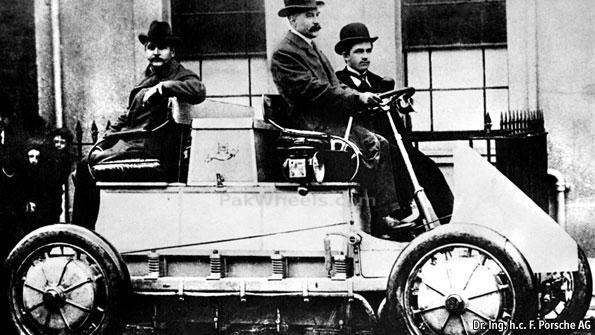THERE are many innovations turning up in the latest experimental and production electric cars, affecting everything from batteries to motors to control systems. The need to make them all work together is prompting a complete rethink about the way cars should be designed and manufactured, and it is unclear which technologies will dominate as the constraints imposed by internal combustion engines give way to the new limits and possibilities associated with electric propulsion. But one group of engineers have stuck their necks out and declared that a particular technology, the electric hub motor, is likely to become the most widely used drive system.
A hub motor, as its name suggests, is built into the hub of a wheel and drives it directly, rather than having a single motor driving the wheels via a mechanical transmission. It is an idea pioneered by Ferdinand Porsche, the founder of the carmaker of the same name, more than 100 years ago. Mr Porsche got his first job in the automotive business with Jacob Lohner in Vienna, and put electric motors into the hubs of the wheels of the Lohner-Porsche, a vehicle which made its debut at the 1900 World’s Fair in Paris. It was a hybrid car that relied on both batteries and a generator to produce electricity for its motors. Capable of more than 56kph (35mph), it also set a number of speed records.
At this week’s Deutsche Messe technology show in Hanover, researchers at the Fraunhofer Institute displayed an electric vehicle which they are using as a test platform to investigate new vehicle systems. It includes electric hub motors, which they have developed to be markedly more powerful than any such motors currently available. The motors have all the necessary power and control systems integrated into the wheel hub, greatly reducing the number of connections between the hub motors and the rest of the vehicle.
Because hub motors can deliver power independently to each wheel, tricks like four-wheel-drive are possible. With software monitoring each wheel, stability and traction control can also be built-in. Besides dispensing with the traditional engine bay on a car, hub motors save space and weight because there is no need for a mechanical transmission, with its driveshafts and differential units.
Some critics of the technology think having heavy electric motors in the wheels of cars will have a negative effect on vehicle handling. But Hermann Pleteit, a project manager with one of the 33 Fraunhofer research centres that have teamed up to work on the experimental car, says the chassis and many other parts of the vehicle can be configured in such a way to compensate for this.
Several carmakers and component suppliers are interested in hub motors. Michelin, for one, is developing a system it calls the Active Wheel. As well as an electric motor to drive the wheel, it contains a second electric motor to operate an active suspension system that is also built into the wheel hub. Michelin reckons this arrangement, which is now being tested in cars, could make other conventional parts, like shock absorbers, unnecessary.
Such a wheel would, in effect, transform Michelin from being a tyremaker into an engine and suspension supplier as well. Many other such changes are coming for the companies in the automotive business, say the Fraunhofer engineers, because some parts will no longer be required for electric vehicles, but other new parts will be needed instead. So as electric propulsion takes hold, it will not just be the shape and the dynamics of the vehicles themselves that will change, but also those of automotive companies, too.
Electric cars: Hub of the matter | The Economist
